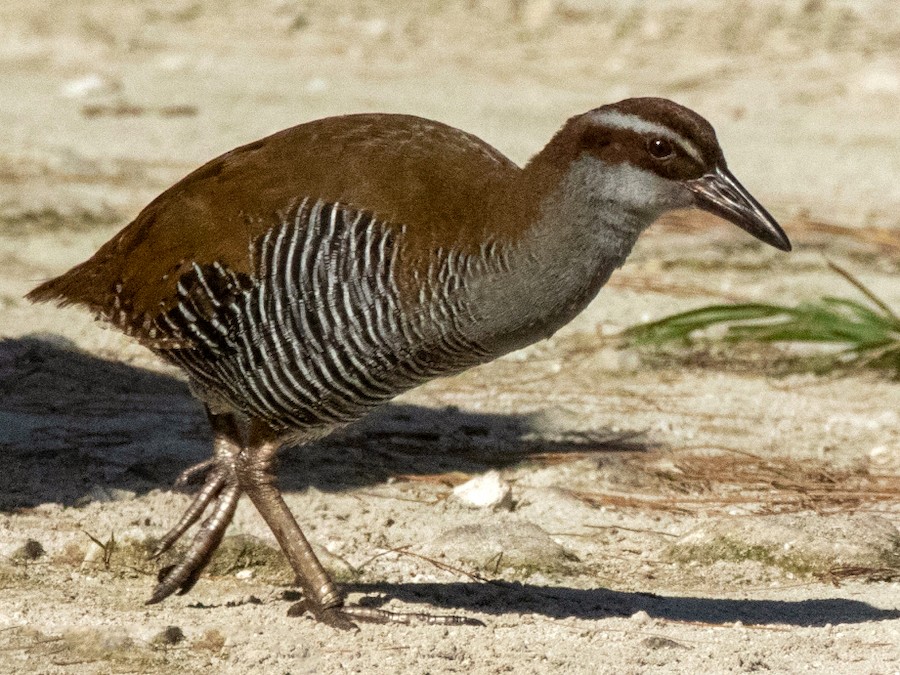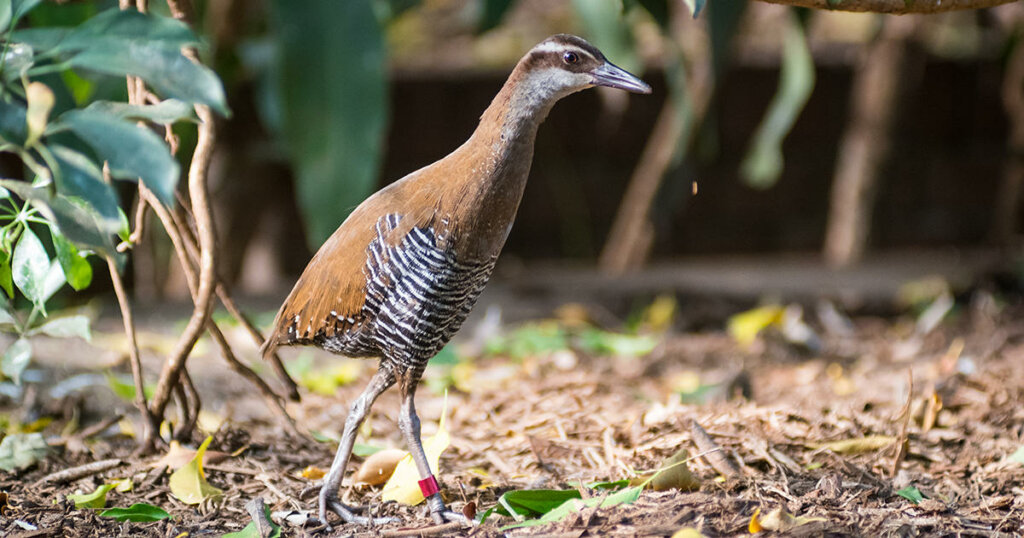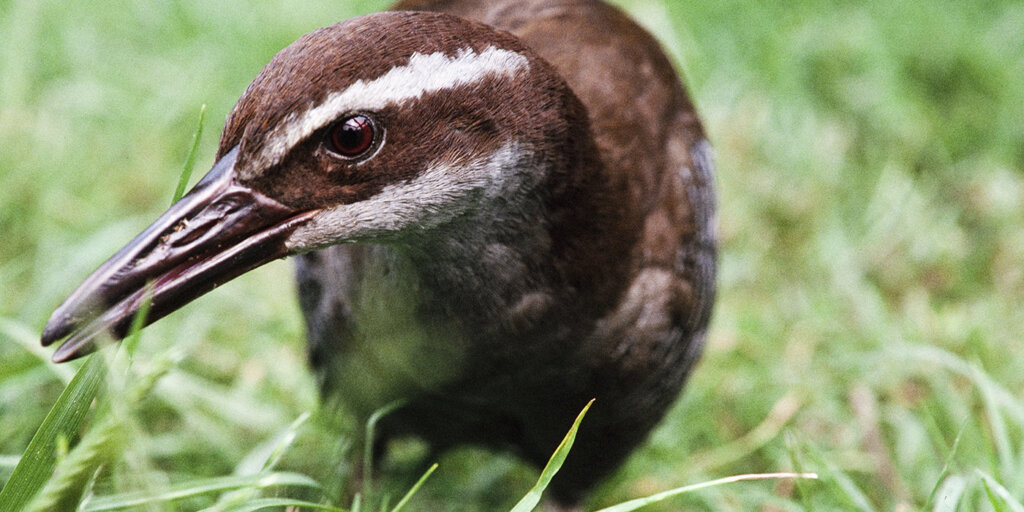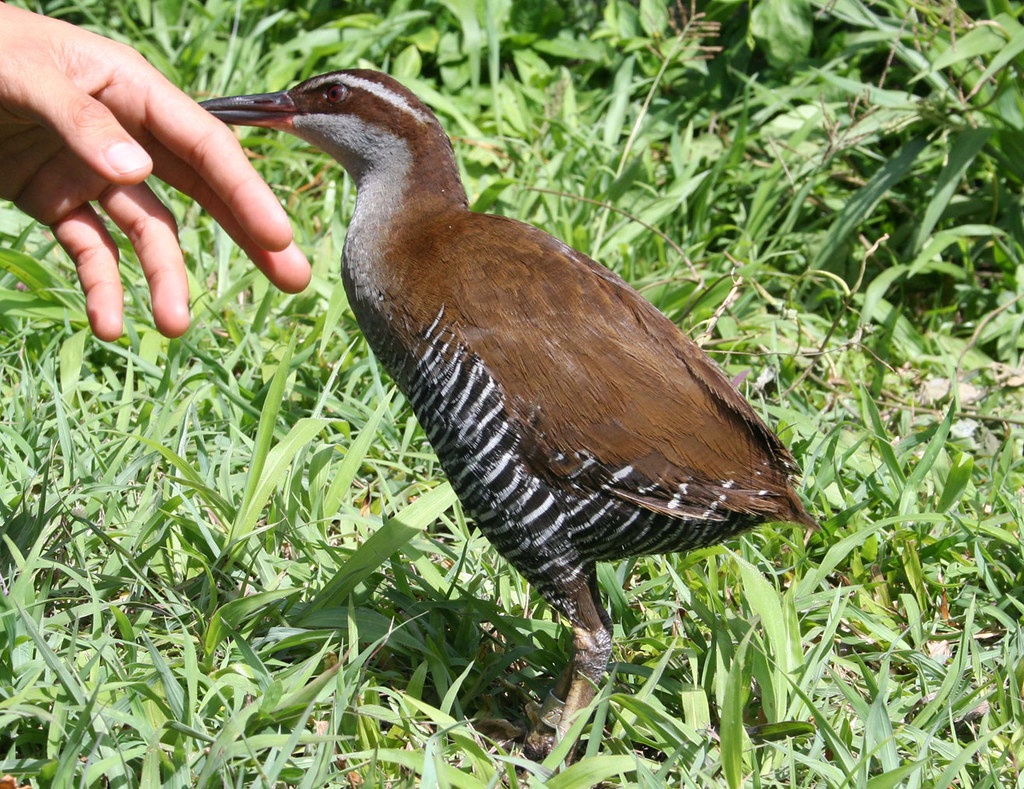All About Guam Rail!
The Guam rail is a bird that has certain conditions that have led to it being flightless. It has a narrow body & short wings meant for fast running through tough terrain, giving it its namesake & nickname, "The Rail". They are secretive birds with a territory of their own but will socialize around human settlements using pathways like roadsides or feed-in parks and forests.
Rail sounds are typically made using a voice with a sharp high-pitched call. Guam rails are given by the birds in response to loud noise or even their partner's calls. However, populations of the critically endangered Guam railbird have been established on islands near Rota and Cocos Island in the Pacific Ocean.
Physical Description
Guam rails are small birds endemic to Guam. They have a chocolate-brown head with a plain gray stripe near the eye. They have slightly narrower bodies than the average bird and are quite fast runners. The Guam Rail's neck and upper body are gray, but they have dark brown breasts with white spots.
The wings are light brown with dark spots and have a slate grey underside. The Black-necked Stilt has a dark, black upper body with white wing bars that contrast beautifully against its mostly gray and white lower body. It has meaty medium-length legs and long toes for walking across soft moist ground.
Size
Guam rails are small birds that grow to lengths of about 11 inches (28 centimeters) and weigh 7 to 12 ounces (200 to 350 grams). Females are slightly smaller than males, but their plumage is the same.
Native Habitat
This endemic rail was once found across most of Guam's different habitats. It is also quite a small bird and has been declining over the years. It was once nearly extinct but now its numbers are increasing, as you can see with the increase in sightings over these past few years.
Guam rails are one of the last endemic birds on Guam, and can still be found in small numbers on the islands of Rota & Cocos where populations have been established through breeding programs. Rota is an island north of Guam.
It's one of the Commonwealth of the Northern Mariana Islands and is uninhabited, though there exists a resort on its southern end. Cocos Island is a small (33 ha) island which is located about 1 mile off the southern tip of Guam -- it does not have any inhabitants as well.
Food/Eating Habits
Guam Rail is a reptile that forages along field edges and roadsides like street flowers, scavenging snails, slugs, and insect larvae.
Reproduction and Development
Guam Rails reach sexual maturity at about five months. They breed throughout the year, with a peak period during the rains from July to November. The male and female construct a shallow ground nest together on dry ground in dense grass, and they share responsibility for raising their young. Juvenile birds leave the nest within 24 hours of hatching. They are precocial and can fend for themselves.
Lifespan
The average life expectancy for females in Guam is 5.7 years, while males can live up to 9.5 years.
People also ask
What caused the Guam rail to disappear from Guam?
The Guam rail is a lizard that is endemic to Guam. It has been extinct since the 1970s, but there are still some people who hope to see it return.
The Guam rail was declared extinct in the 1970s due to habitat loss and hunting. The last confirmed sighting of the lizard was in 1973 when it was found dead by a road.
Why are there no birds on Guam?
The Island of Guam is about 21 miles long and 14 miles wide. It has a total area of 775 square miles. The island has a large number of birds, but there are no birds on Guam. In fact, there are no birds in the United States that are native to Guam.
What is the state bird of Guam?
The state bird of Guam is the Micronesian Kingfisher. They are the smallest bird in the world, and can only be found in the Micronesian islands.
Are Guam rails diurnal?
I've heard that, in the recent past, some companies have been making a fortune from the sale of guano. Guano is the fertilizer that comes from seabird droppings.






